-
Posts
2.067 -
Joined
-
Last visited
-
Days Won
52
Posts posted by Genava55
-
-
16 minutes ago, Imarok said:
We should just have female and male workers with the same stats. This seems more accurate. I think working on fields or in mines was more a concern of class/caste than of sex in these times.
Indeed, it is slavery. Men and women were mostly equivalent on the matter. It is a very important aspect of ancient societies (sadly). The exception being the Mauryas and the Han dynasty of China with little slavery.
16 minutes ago, Imarok said:Regarding female warriors: I lack the historic knowledge about that. But it seems that newer research doesn't support this thesis that in the past (without some exceptions) only men were warriors throughout the history. (not sure if this research applies on 0ads timeframe)
Obviously, female warriors were an exception more than the rule. There are cases of female leaders in the Celtic societies but nothing indicate they were fighting on the battlefield. Although it is possible that some women were warriors in the Germanic societies, and it is known and demonstrated that Scythian and Sarmatian warrior class included women. Unfortunately, both civilization are not in the game.
Finally, the game mechanisms are restrictive and it is difficult to portray anything else than productive and military forces.
-
@Duileoga No creo que tengas que preocuparte demasiado por esto. Las fuentes arqueológicas son débiles en las viviendas rurales de Tracia. Hay vestigios que sugieren casas de paja, ladrillo o piedra. Hay casas más bárbaras como palacios a la moda griega. Creo que la forma más sencilla es partir de casas rectangulares con paredes de piedra y techo de madera. Un poco así o así. Inspirado por eso.
También puede inspirarse en el edificio producido por Lion.Kanzen como centro cívico. Para analizar este edificio, diría que las escaleras son inútiles y que las columnas no deberían estar a tal altura. Pero la idea de un recinto es coherente con lo que sabemos de los príncipes tracios. Vivían en pequeñas fortificaciones, amaban el estilo de vida griego, les encantaba festejar y recibir invitados para mostrar su riqueza.
On 26/09/2016 at 3:08 AM, Lion.Kanzen said:Conocemos un ejemplo concreto de un pequeño edificio aristocrático de arquitectura griega, el Palacio de Seuthopolis. Uno podría imaginar reemplazar las escaleras y el templo en el modelo de Lion.Kanzen por una casa de varios pisos con columnas en la fachada frontal, inspirándose en el Palacio de Seuthopolis.
On 05/08/2019 at 2:38 PM, Genava55 said:Después de todo, encontramos esta idea en villas romanas que copiaban la moda griega, a veces con varios pisos.
Para hacer más "tracia", podría ser posible agregar decoraciones similares a las de la tumba tracia de Svechtari.
-
 1
1
-
 1
1
-
-
-
On 28/12/2018 at 9:58 PM, Genava55 said:
I found some nice sketch here:
(for French speaking people, there is a recent documentary about the relation between Aremorica and Britannia regions during the pre-Roman period: https://www.youtube.com/watch?v=SH-lXCmP3XQ)
On 04/12/2018 at 3:33 PM, Genava55 said:For Celtic ship, there is this discussion:
http://www.kelticos.org/forum/viewtopic.php?f=6&t=2228
There are some similarities with Bronze Age Phoenician Ships.
https://exploration.marinersmuseum.org/watercraft/phoenician-ships/
https://en.wikipedia.org/wiki/Uluburun_shipwreck
Topic of the small ships raised on: https://code.wildfiregames.com/D2996
Etruscans smaller ships vs Greek biremes

Etruscan Stele:
Picene ships:
-
Thracians depicted:
Spoiler















-
 1
1
-
-
-
I was thinking about something realistic/credible as in BFME reforged, Praetorians, Ancestors Legacy, Manor Lords etc.
-
I think the best is to enable new mechanics for the modders, in time there will be several approaches explored. Some people prefer AoE like gameplay, some others prefer Total War battles, some prefer soft city builders with warfare gameplay like Dawn of Man and other prefer more tactical aspects like BFME or Ancestors Legacy.
Battalions, switchable weapons, area damage etc. those will be useful and really appreciated anyway.
-
3 minutes ago, wackyserious said:
@Genava55 would the shield designs above be alright to use? Or do you have design suggestions for their thureos shields?
It's alright.
-
 1
1
-
-
In French but with many many many eye-candy artifacts:
-
 1
1
-
-
47 minutes ago, wackyserious said:
@Genava55 Snake depictions are common among Thracians right?
Yes and no. In some case it is some kind of dragon. Sometimes it is a snake, sometimes a kind of hydra. There are cases were we have found three snakes figurines or three-headed snakes. In some coins, the snake is generally preyed by a giant bird.

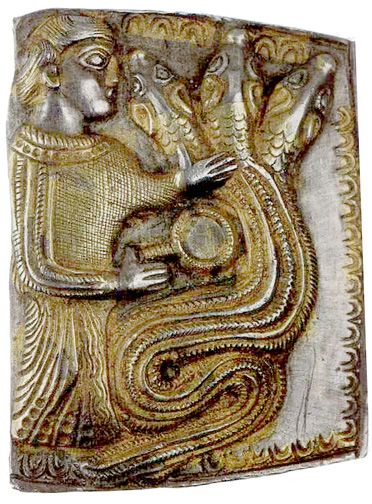

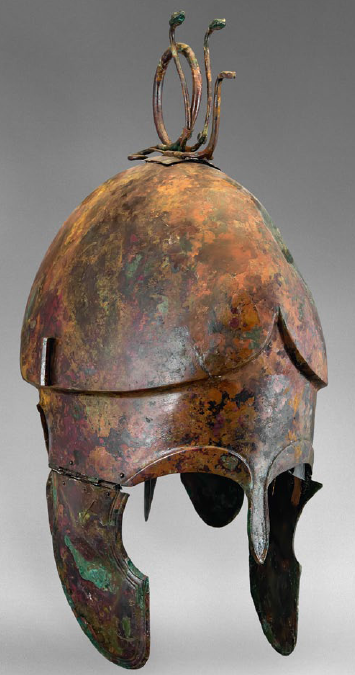
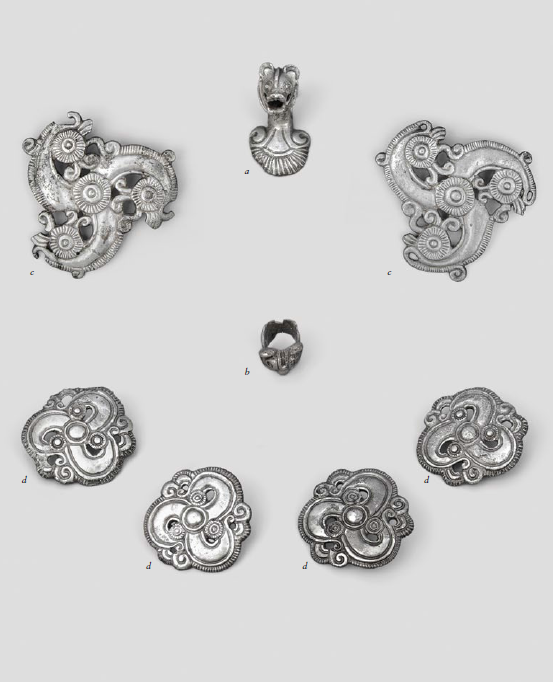
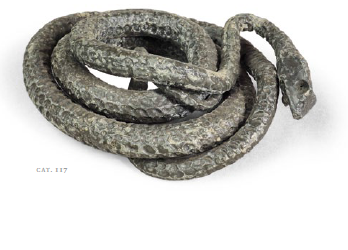
-
 1
1
-
-
-
There is a public event about reenactment and archaeology movies with a public poll. The event is from France:One of those movies is about the Gauls during the Gallic Wars and is available with English subtitles. This is made by a well-known reenactment group, Les Ambiani:
-
 1
1
-
-
Interesting video, not directly related to the Kushites but still interesting to the topic:
-
 1
1
-
 1
1
-
-
8 hours ago, badosu said:
As far as I know that's true for the Hastati (romans) but I'm not sure there are references to other civilizations.
There are often misconception about the legionaries, we usually imagine them standing firm against waves of barbarians. But in Polybius books this is clear they are charging very often and that it is one of their main assets.
-
 1
1
-
-
1 hour ago, Thorfinn the Shallow Minded said:
At the moment, units are arbitrarily divided into sword and spear melee categories. I would argue that this distinction is bad for the following reasons:
Few soldiers equipped exclusively swords, which were primarily a side arm.
The representation of sword units being a counter to spear units is ludicrous for our purposes during the ancient times. Instead, disciplined all infantry formations should always be able to withstand frontal cavalry assaults. Any differentiation between spear and sword wielding is similarly arbitrary.
The spearman, a unit type that is countered by sword and ranged units, is largely ineffective against cavalry due to a lack of adequate mobility.
Thus, there should instead just be melee infantry and melee cavalry, with subtypes based more around armour and training yet still retaining the core functions of their parent categories. This would greatly streamline one of the game's more unintuitive aspects.
I've intentionally kept this brief and would be willing to elaborate my points if needed.
I think this analysis comes back time to time here. Personally I agree, this is a gamey choice from a classical rock paper scissors system, it could be justified if it worked but I think it brings more issues than it solves.
As Thorfinn indicated, historically the ability to withstand against cavalry depended on the formation. I think this is a critical point that should be included in the gameplay design for the future.
-
 1
1
-
-
@wackyserious @Ultimate Aurelian Probably we should make an exception for heroes about the scaled armor. I don't think scale+mail is credible but a metallic scale armor is not impossible for the highest level of society.
For the two swords and the shield hold by the arm, maybe it should be replaced by a javelin held with the shield on the same hand:
-
 1
1
-
-
Other stuffs:
https://www.facebook.com/dorsetodinists/posts/974389453043295
https://www.facebook.com/SamsonIllustration/posts/3314557838656844
JFOliveras made some illustrations weeks ago about Pytheas' journey, if I really like his art and his skill, I find it sad he isn't properly advised about the material he relies on.
-
 4
4
-
-
-
-
Eng sub available.
I posted a long time before on the topic of the battle-axe in alpine region (Lepontian and Rhaetian):
On 11/02/2019 at 12:34 PM, Genava55 said:Lepontic axeman - Suggested name: Namantobogios (smasher of enemies).
Description => Port, Alesia, Negau or Ticino helmet / Trousers / Cape / Chain mail or Leather cuirass / one-handed axe / Long shield with shield boss and orle protection
-
On 13/10/2020 at 4:04 PM, Nescio said:
I'm hoping @Genava55 and will provide some quality images of Celtic chariots
There is a very good article wrote by Raimund Karl on the topic:
https://dc.uwm.edu/ekeltoi/vol5/iss1/1/
SpoilerAncient depictions:




Modern reconstruction:
https://commons.wikimedia.org/wiki/File:Hallein_Keltenmuseum_-_Streitwagen_2.jpg

Modern illustration:

Some reenactment:

-
 2
2
-
-
2 minutes ago, Genava55 said:
Olivier Buchsenschutz: "They invented the plough, a rudimentary harvester and the rotating millstone. They also invented the scythe, which means that they store hay, and they can keep their livestock in winter."
The rotating millstone, maybe not. The oldest finds are from North-Est Spain and Southern France, close to the Pyrenees. Hard to tell if this is Celtic or not, this is an area between several influence spheres.
http://www.archeologiesenchantier.ens.fr/spip.php?article156
The scythe, yes it is really plausible. The oldest find, at my knowledge, is from the 3rd century BC in central France:
-
 1
1
-
-
Discovery of extraordinary Celtic vestiges in Bulgaria
Extraordinary remains recently unearthed make it possible to trace the presence of Celts on the eastern margins of Europe, where the ancient Thracian kingdoms were located.SpoilerIt is a still life unique in the world, two horses pulling a chariot, frozen in full motion for eternity. Resting in a pit, under a 3-meter high mound, these incredible Celtic funerary remains have been exhumed in Sboryanovo, in northeastern Bulgaria. This discovery and that of a sanctuary belonging to the same culture shed new light on the presence of the Celts on the eastern borders of Europe.
"Hundreds of chariot graves have been found in Gaul. But if all of them contain elements of chariots, they are only very rarely associated with horses. Some contain the head of an equine animal or bones, but never a standing horse-drawn carriage," says Patrice Meniel, archaeozoologist and director of research at the CNRS, who joined the Bulgarian-Swiss excavations at Sboryanovo. Only one other tomb of this type was unearthed in England in 2018. This staging of a team in motion is spectacular," continues the researcher. It required a quite remarkable arrangement of a pit, with a plan for the heads, a plan for the bodies and two trenches for the front and hind limbs. The first impression was that of a fossilized carriage standing upright as in Pompeii. But then we realized that the horses were in fact in the levade position, their front legs bent as if they were curtsy. »

Details of the horses discovered in levade position at the site of the necropolis of Sboryanovo, Bulgaria. One can distinguish the imprint of the tiller of the chariot, which was originally made of wood.
Although the wooden frame of the tank has disappeared, leaving only its imprint in the silt, the well-preserved iron and bronze parts are notably similar to those of a tank tomb unearthed in Nanterre. Various hypotheses can explain the presence of such a Celtic ensemble in Bulgarian soil. It could be a war prize, a diplomatic gift, an object of prestige imported via the commercial circuits of the time, or a witness to the migration of Celtic populations to the Thracian kingdoms that covered the present-day Balkans.
The discovery of a sanctuary similar to those that existed in Gaul, on the other hand, attests with more certainty to the existence of Celtic communities in Eastern Europe. Discovered about a hundred meters from the chariot, it is at least a hundred years later, dating from the end of the 3rd or beginning of the 2nd century BC. Delimited by a quadrangular ditch and containing a deformed sword, it is strikingly reminiscent of weapon sanctuaries such as that of Gournay-sur-Aronde, in the Oise.
The expansion of the Celts to the margins of the continent left only tenuous references among ancient authors. Strabon thus evokes their presence in Thrace in 335 B.C., when Alexander the Great entered the region. The historian reports that they sent ambassadors to the conqueror on the banks of the Danube. During the feast that followed, the latter asked them what they feared most in the world, hoping to hear his name. Instead, he was given a legendary reply: they feared nothing as long as they saw the sky falling on their heads.
The same Strabo and especially Polybius then evoke the creation of a Celtic kingdom in Thrace, with a capital called Tylis. Since the 1950s, archaeologists have discovered a number of Celtic remains in Bulgaria - torques, weapons, silverware, bronze ornaments. But these artefacts invite caution. "It is a fragile sphere of research. You build scenarios that sometimes rely on very little. Celtic swords, for example, are the equivalent of today's Kalashnikovs. They are effective, they spread well. You don't have to look for a Celt behind every object," insists archaeologist Jordan Anastassov of the University of Neuchâtel, who is co-directing the excavations at Sboryanovo with Professor Diana Gergova. This is what makes the discoveries at Sboryanovo extremely interesting: we have a context. "Immense, the archaeological site extends over 800 ha. It shelters in particular a fortified habitat and more than a hundred monumental mounds - the highest rise to about twenty meters - surmounting royal and aristocratic tombs. Most of the remains date from the 1st millennium BC and are associated with the Greeks, one of the Thracian peoples who occupied the Balkans at that time. For the archaeologists who excavate it, the site could be that of their capital, Helis, mentioned in ancient texts.

Reconstruction of the position in the pit of the horses, frozen in levade position, harnessed to the chariot.
The sanctuary should attest of the presence of a Celtic community of Western or Central Europe within a cosmopolitan city. "There are no signs of an invasion, no identified break in the habitat or burials, but rather the impression of a mix of populations living in this part of the Thracian world," explains Jordan Anastassov.
A cultural crossroads that would find a striking embodiment in the tank grave. "The area is not far from the territories of the Scythians, who also attached great importance to horses, as the deposits of the kurgans show. In Eurasia, there are necropolises of horses without chariots, and in Western Europe, there are tombs with chariots without horses. Sboryanovo is at the crossroads of these two conceptions," Patrice Meniel says.
The site has yielded other extremely peculiar funerary remains, such as a tomb with a horse and a dog standing side by side and, under the largest burial mound in the area, an entire oak tree, buried with a chest containing gold ornaments. "Among the Thracians, as among the Celts, the oak could have had a sacred character. The presence of this tree is reminiscent of the sacred woods identified in some Celtic shrines," Jordan Anastasov said. With these vestiges, one is in the presence of the will to freeze the living. The ancients sought to petrify the movement. "An illusion of life has emerged from beyond the grave, after more than 2000 years of waiting.

Bronze elements of the yoke and harnesses. These pieces are characteristic of Celtic art.
The destiny of the Celts: history and decline
For seven centuries, this mysterious people reigned over vast stretches of Europe before being defeated by the Romans. Who were the Celts? And why did their remarkable culture decline?https://www.nationalgeographic.fr/histoire/2020/09/le-destin-des-celtes-histoire-et-declin
Spoiler
The dead were lying there, beheaded. Horses, cattle, and sheep had been sacrificed. The inhabitants had piled the bodies in pits or placed them there in ritual ceremonies.
The Mormont Hill in Switzerland actually witnessed such horrific scenes, according to archaeologists Gilbert Kaenel and Lionel Pernet, in what appears to have been a Celtic refugee camp above Lake Geneva. Gilbert Kaenel, until recently director of the Archaeological Museum of the Canton of Vaud, directed the work of preservation and restoration of the Mormont pits. Lionel Pernet took over from him.
Archaeologists began excavating the hill in 2006, prior to the opening of a limestone quarry. They then discovered 250 pits. They contained countless remains of ceramic and bronze drinking vessels, as well as blacksmith's tools and six carpenter's axes, not to mention more than 150 millstones that had not been used much, if at all. But there were very few traces of weapons. On the other hand, bones were unearthed, including those of particularly precious horses, imported from Italy and symbols of prestige among the Celts. But other bones belonged to humans.
About fifty people were found lying like in a grave or buried in a seated position. Several skulls were missing their lower jaws, often removed by the Celts for ritual purposes.
Kaenel and Pernet believed they had discovered a place of worship on the Mormont before they were taken in doubt. Indeed, sacred sites are characterized by a certain permanence. However, as far as they knew, the place was only populated for a few months. And it was not a colony, if only because the geology of this limestone mountain does not lend itself to the constitution of water reserves. It was therefore necessary to bring it painfully to the place. But why did these people kill valuable animals? Why did they leave tools and millstones there?

Sacrifice on the Mormont. Half a century before the battle of Alesia, the Celts sacrificed animals, but also human beings, on this hill in western Switzerland. Their distress was great and they implored their gods to help them, suppose the archaeologists who excavated the site. In fact, around 100 BC, the Romans widened their area of influence; above all, the Germans scoured the region by plundering. Was the Mormont a Celtic refugee camp?
All these objects were of vital use," says Gilbert Kaenel. They wouldn't have got rid of them without a reason. »
Here is what the archaeologist supposes: the Celts took refuge on the Mormont hill, perhaps, except the men fit for combat. In their desperation, they sacrificed even their dearest possessions, going so far as to immolate humans to beg the help of the gods. At that time, indeed, towards the end of the second century BC, changes were taking place in Central Europe. Bands of Cimbres and Teutons, Germanic tribes, skimmed the Celtic territory of southern Germany and Switzerland today. Rome itself had to defend itself against these intruders - and took the opportunity to expand its own area of domination.
It was a dramatic time, a real turning point," says Gilbert Kaenel. It marked the beginning of the decline of the Celts. »
This new civilization had emerged in Europe seven centuries earlier, when iron had replaced bronze as the leading metal used in the manufacture of weapons and tools.
In a territory ranging from Bohemia to Burgundy, through southern Germany, men adopted a similar lifestyle. They built burial mounds, developed similar rituals, created a figurative art marked by representations of animals and humans, and adopted the use of typical staples to close their clothes. They were also at the origin of a technological revolution, with the invention of tools such as the potter's wheel with rapid rotation and the hand wheel.
The Celts lived in distinct tribal groups. Whether they saw themselves as a community and developed a collective feeling is unlikely. Historians and archaeologists agree that they never created a coherent empire. Many researchers go so far as to question the very existence of an entity that could be called "the Celts".
Many prefer to speak of an Iron Age culture - also known as the Hallstatt and La Tène cultures. But most accept the term "Celts", if only as a common collective name for a people that extended on one side to Turkey and on the other side to Spain and even reached the British Isles.

The capital of the Aedui, in Burgundy, was one of some 150 oppidums fortified by the Celts. There they worshipped their gods and traded. Craftsmen made jewelry and minted coins. By the end of their era, the Celts had reached an advanced level of civilization.
The Celts engaged in long-distance trade. They assimilated the knowledge and way of life of southern European civilizations and imported wine. They were also remarkable builders, who were responsible for the first cities north of the Alps. Yet, this people is the only one in all of ancient Central Europe that did not leave a nation.
The Celts had no written language. Researchers must therefore rely on the - often politically motivated and biased - accounts of their Greek and Roman contemporaries, such as the historian Herodotus and General Julius Caesar. But their main sources of information are archaeological excavations, such as those undertaken by Dirk Krausse.
This archaeologist from the state of Baden-Württemberg in southwestern Germany stands on the highest point of the Heuneburg, halfway between Lake Constance and Ulm. He looks out over a system of mighty fortifications and moats, built there by the Celts 2500 years ago. The system was intended to protect their settlement, which was built on a sloping plateau just at the level of a ford on the Danube.
The Heuneburg was founded around 620 BC, at the beginning of the Celtic period. It was built on the upper reaches of the river, at its meeting point with an old trade route that led to the Neckar River and further to the Rhine. The Heuneburg became a hub for trade with distant countries via the Alpine passes leading to Italy.
It was also through this crossing point that goods and ideas arrived in the north - as did the technical knowledge needed to build the city's clay brick wall. This had never been seen before in Central Europe, nor in much of Italy: a wall 750 m long and 4 m high, plastered white, with towers, a parapet walk and two gates.
Krausse contemplates the eminence on which stand some reconstructed buildings. "Up to 3500 inhabitants could live here," he estimates. Rome was not much larger, at the time, and the population of Athens probably did not exceed 10000 people. "He is convinced that Heuneburg, located in southern Germany, is none other than the legendary Celtic city of Pyrenees mentioned by Herodotus.
Behind the surrounding wall, craftsmen made expensive ceramics. Workshops, houses, and warehouses stood side by side in an early form of urban life. All archaeological discoveries suggest a period of relative peace, despite some mysterious upheavals. The citadel was renovated and, 170 years later, suddenly abandoned by its inhabitants. Perhaps the trade routes had moved again, making the Celtic city and its external settlements less important.

Around 620 B.C., the Celts built the Heuneburg near the Danube in southern Germany. Its architecture, especially the white clay brick wall (above), was then unknown outside the Mediterranean region. Did a craftsman import the plan?
One site illustrates the position it occupied, and particularly fascinates Krausse and his team. The archaeologist turns around to point to two grass-covered mounds near the Heuneburg: "Those who once passed through the main gate and looked between these mounds could see a sparkling white rocky spur in the distance. This is the Alte Burg. A direct communication route connected it to the Heuneburg."
The construction of the Alte Burg ("Old Castle"), which was built by the Celts 2500 years ago on an escarpment in the Swabian Jura, is hardly believable. With rudimentary technical means, they cleared and levelled the 340 m long and 60 m wide eminence. Then they protected this area with more than a hundred bastions. On the two lengths, they built two terraces and dug a ditch at their foot. The bright white of the limestone spur stood out against the surrounding landscape-a sign of dominance and power visible from afar. On one side of the plateau that the forest has long since reclaimed, a 5 m deep ditch was excavated more than a century ago. The remains of six individuals were found there, but have since disappeared. By resuming excavations on site in the mid-2000s, archaeologists have unearthed other bones.
Researchers are wondering about the possible function of the site. Was the Alte Burg a place of worship? Krausse puts forward a bold hypothesis. He believes that the inhabitants of the Heuneburg borrowed from Italy not only the construction technique of their enclosure, but also the chariot racing shows.
Was the Alte Burg a Celtic equivalent of the Circus Maximus of Rome and was it also used for certain ritual ceremonies, including human sacrifices? Were competitions organized there to bring the Celts of the region closer together and cement a common identity? If Dirk Krausse is considering it, he adds cautiously: "We do not know much about the intellectual and spiritual world of these individuals. Many elements remain obscure. »
At the time of the construction of the Heuneburg, another Celtic site had already gained importance: the Glauberg, a plateau rising out of a rolling landscape just north of present-day Frankfurt. Beyond the glass window of the local museum lies the gently rolling landscape of the Vetterasia, with groves and small forests. "According to Axel Posluschny, who is leading the Glauberg research, the forest was probably already sparse there. There were two or three farms with four or five buildings, here and there villages a little bigger. These settlements were separated by fertile land, where barley, fertilizer, spelt and lentils were grown. »
Mixed cropping probably reduced the risk of losing an entire crop. And analysis of the bones found there established that they were those of pigs, goats and chickens.
Three human beings had been buried at the foot of the Glauberg. Over the last few decades, excavations of the graves have yielded skeletal remains and accessories of particular richness: swords, spearheads, gold bracelets and necklaces, a shield and two pitchers still containing remains of mead.

In many of their rites as well as in their art, the Celts were inspired by their neighbors south of the Alps - the Etruscans as well as the Greeks. A few kilometers from the Heuneburg, they leveled a rocky spur. In addition to its ritual functions, this plateau hosted chariot races. At least that is what archaeologists assume.
At the foot of the plateau, researchers also discovered a sandstone statue, nearly 2 m high and topped with a mistletoe crown. Unique of its kind, the statue has become the symbol of the site. But the archaeologists of Glauberg are even more intrigued by a gigantic surrounding ditch and the "processional path". This one is aligned precisely on the southernmost azimuth of the moonrise. However, this astronomical situation occurs only every 18.6 years. What does all this mean? "Walls and ditches are pure show-off," says Axel Posluschny. Nevertheless, knowledge is always a source of power, and this installation is a symbol of that power. It also shows us that the Celts already had remarkable scientific knowledge and made long-term observations of natural phenomena. »
These observations were undoubtedly the task of the druids, a particular caste. However, much less is known about them than is attributed to them by their fans today. Greek chroniclers, such as the philosopher Posidonius, have described these mysterious men, and Caesar gave the names of the gods with whom they sought contact: Mercury, Minerva or Mars. However, we have no information about the druids from the Celts themselves.
The druids transmitted their knowledge only in oral form. We have no written records. Archaeology itself does not provide any evidence of the existence of these spiritual guides. No burials attest to their reality. The shrines and places of sacrifice, however, suggest that an organized clergy existed.
The Druids were undeniably the scholars of their time," describes archaeologist Susanne Sievers, a specialist in Celtic studies. They were interested in astronomy as well as politics and economics. They served as advisors to the leaders. "Perhaps they were also involved in construction projects. And perhaps they were consulted on the creation and orientation of the Glauberg processional route.
If they were very much listened to in all matters relating to peace and war, they were probably also listened to at the time of the march on Rome, an event whose consequences were to be dramatic, for the Celts as well as for the Romans.
Celtic warriors had already fought as mercenaries in other armies, and even in the Roman ranks. Merchants told tales of southern luxury. Attracted by the prospect of a better life, and no doubt driven by poor harvests due to unfavorable weather conditions, several tens of thousands of Celts gathered around 400 BC and crossed the Alps to the south.
In July 387 BC they reached Rome. There they found the streets and squares deserted. Thousands of inhabitants had fled. Only old people, women and children remained in the houses. The Celts invaded the Forum, before pillaging and massacring.
The Romans, however, were not defeated. After long battles, the intruders were driven out. But the humiliation of having been threatened on their own soil remained engraved in the minds of the Romans. It marked the attitude of the Romans towards the Celts until their ultimate defeat 330 years later.
In the meantime, the most important economic centers of the Celts flourished at the foot of the Eastern Alps. This region was a salt mining area. In the upper Hallstatt valley and near Dürrnberg, salt is found relatively close to the ground surface. Salt is an essential product for both people and cattle. It was used to season dishes, to preserve meat and to tan leather. However, Dürrnberg is close to the Salzach, a navigable river, which was used to transport "white gold" to its outlets.

Salt has always been a resource. In Celtic times, it was extracted in Hallstatt and Dürrnberg, near the present-day city of Salzburg. The adult miners used to pick up the pieces of salt that the children brought to the surface. The valuable goods were transported on the Salzach to the Manching oppidum near Ingolstadt, among other destinations.
Holger Wendling, director of research at the Keltenmuseum (Celtic Museum) in Hallein near Salzburg, Austria, stretches his arm out to the left and right and drives along a county road through this fragmented middle mountain region. He is familiar with the sites where people lived in small settlements and farms.
The Dürrnberg has been the subject of research for decades. It is estimated that about a thousand people lived in the surrounding area, living from salt extraction or as carpenters, tanners and merchants. As an important center of the salt trade, Dürrnberg supplied a large part of Central Europe. It was "a kind of special economic zone for mining and other industries," explains Wendling.
Salt mining was expensive and required a lot of investment, which presupposed the existence of a prosperous ruling class. The first step was to identify veins of rock salt. Then galleries 200 to 300 m long were dug into the rock, supported by tree trunks. They had to be ventilated and fed to the miners. It was hot and the torches provided little light. Salt was loosened with ordinary pickaxes, and it can be assumed that women and children were in charge of carrying the heavy blocks of salt into the open air. A very hard job.
Salt not only allowed the preservation of meat; it also preserved objects that the Celts left behind. Archaeologists have found leather shoes in good condition with their laces in the mountain, as well as human excrement. Analysis of the latter revealed that the miners ate legumes and cereals, and that many of them suffered from parasitosis such as nematodosis and liver flukes. This did not prevent some of them from living to 80 years of age. In 1573, miners working in the galleries had already discovered two well-preserved corpses there.
It can be assumed that the salt merchants of Dürrnberg also supplied Manching, then the largest city north of the Alps. It is also one of the best known examples of oppidum - the name given by archaeologists to the great fortified cities of the 2nd and 1st centuries BC, where the Celts combined secular and spiritual life, dwellings, trade and sanctuaries.
Susanne Sievers has been working at the German Archaeological Institute in Manching near Ingolstadt for more than thirty years and has reconstructed the life that was lived there. After crossing the surrounding wall built around 125 BC, one discovered a settlement with more or less rural characteristics. However, the inhabitants had established a complex system based on hierarchy and division of tasks. They minted coins and traded over long distances, including with the Romans; they used Latin script and mastered metal and glass work. The city was able to shelter up to 10000 inhabitants, organized in small units which occupied each one a surface of 100 m by 100 m.
"The Celts were at the threshold of an advanced civilization", estimates Susanne Sievers. But it is then that their destiny rocked.
Around the same time that the Celtic group sought refuge on the Mormont River, the people of Manching reinforced the eastern gate of the city, which was the main entrance. They may have been expecting enemies from the north: the Cimbres and Teutons (who themselves had left Jylland, in present-day Denmark, probably after a series of poor harvests), or other groups of Celts.
A long phase of decline began soon after. Archaeological research tends to show that the importation of amphoras decreased in Manching, and that less ceramics were made there with graphite from other regions. Perhaps the trade routes were no longer safe.
At that time, the crisis also hit the people of Dürrnberg. Could they no longer transport their salt safely? Had they lost their markets?

The Celtic cross (here in the English county of Kent) is a motif of medieval sacred art. It is found in the British Isles, where many people still speak Gaelic, a legacy of ancient European civilization.
And then, around 50 B.C., the east door of Manching burned. It was not rebuilt. Even more worryingly, the inhabitants did not even bother to clear the debris.
It was the time of the Gallic War - the name Julius Caesar gave to this campaign against the Celts in his best known writings.
In 58 B.C., he had begun the fight against the enemies of the North. His goal was to impose Roman domination over all Gaul, and to increase the glory and honor of Rome, while ensuring his personal political future. The shame, the very trauma, of Rome's defeat three centuries earlier was still present in all memories.
For the Celts, it was their future that was at stake. Could they continue to live free? Or would their territory become a new Roman province, like Tunisia and Libya today, in Africa, Western Turkey, Asia, or Hispania (Iberian Peninsula)?
In the summer of 52 BC, a decisive battle took place at Alesia, Burgundy. Vercingetorix, the leader of the Celts, had entrenched himself there with tens of thousands of warriors. Caesar and his soldiers built a powerful siege device, consisting of wooden constructions and ditches.
In this desperate situation, Vercingetorix finally managed to unite isolated and rival Celtic groups. An armed force of about 20,000 men from all over Gaul rushed to his aid. The battle raged on, but the Celts were finally forced to admit defeat against tactically superior and better trained Roman troops.
Caesar reported the Celtic defeat in four powerful words: "Vercingetorix deditur, arma proiciuntur [Vercingetorix is delivered, the weapons are thrown away]. "However, the Celts' inferiority to the Romans was not only military.
Before the beginning of the first century B.C., the Romans had established provinces in the south of France, strengthening economic ties with parts of Gaul. Trade in wine and several other products had flourished. These exchanges benefited not only Roman merchants, but also the Celts.
Before the beginning of the first century B.C., the Romans had established provinces in the south of France, strengthening economic ties with certain regions of Gaul. Trade in wine and several other products had flourished. These exchanges benefited not only Roman merchants, but also the Celts.
However, this was not the case everywhere. This is what the archaeologist Sabine Hornung, professor at the University of the Saarland, noted during her research. Thus the citadel of Otzenhausen, in the west of Germany, hitherto a modest settlement, took an important rise around the year 100 BC. Half a century later, it suffered a sudden decline and was perhaps even completely deserted by its inhabitants.
Sabine Hornung does not rule out the possibility that the Romans starved them out, unless the settlement, located in the eastern part of the Celtic Trevires, had been left out of development because of its remote geographical position.
At the end of the Celtic period, economic fluctuations led to greater general mobility. Peripheral populations came to settle in the new centers, just as today's rural dwellers are attracted by the metropolises. Entire regions were abandoned - perhaps not because of epidemics that would have decimated populations, as some researchers have suggested, but because people had lost their livelihoods.

While the artisans work in front of their houses, children and carts carry the heavy blocks of salt from the mine, and two men haggle over the price. The Celts used to trade their goods over long distances. They even imported products from southern Europe to the north: Etruscan and Greek ceramics and wine from the Roman provinces of France.
The Gallic War ended with the military defeat of the Celts. Economic transformations helped to integrate them into Roman life, and the Romans had little difficulty in reconciling them. The elites were the main beneficiaries of the new times. "Why would they have been hostile to the new masters? "asks Sabine Hornung. And the attitude of the wealthy classes undoubtedly influenced that of the common man.
The archaeologists think that the transition to the Gallo-Roman civilization and, finally, the almost complete extinction of the Celtic way of life went rather smoothly. The Romans maneuvered intelligently.
"They allowed many cities to keep their administrative autonomy. They also left to the Celts their sanctuaries and authorized their chiefs of tribes to continue to sit, while keeping the last word, describes Günther Moosbauer, archaeologist specialist of the Romans. They also created forums where Roman goods such as fabrics, lamps and wine could be purchased, thus persuading the Celts of the advantages of the Roman way of life."
How did the Celts live? What were their achievements? How did they disappear? Thanks to their discoveries, researchers have been able to form a relatively precise idea of this ancient civilization. However, many questions remain unanswered, and some hypotheses are still waiting to be confirmed.
For example, it is not yet known whether the Alte Burg was really an early Celtic circus and whether, in Switzerland, the Mormont was indeed a refugee camp. Where, a few years ago, archaeologists were still digging bones and ceramics from the ground, large excavators are now tearing open the limestone mountain of the site.
Back from the summit of the Mormont, Gilbert Kaenel takes a narrow road that runs along the back side of the mountain. The Jura Mountains rise under the sun's rays. Dandelion flowers enamel the meadows; here and there a small forest emerges. A peaceful atmosphere. The archaeologist scours the landscape with his eyes while a mischievous smile lights up his face: "Who knows what there is still to discover here?"
Culture and industry: what we owe to the Celts
Invention of the plough, creation of fortified towns, mastery of wood architecture, abstract art... Zoom on the contribution of the Celts in Gaul.Spoiler
Model of the farm of Bazoches-lés-Bray (Seine et Marne) IIe century before J.- C., presented to the museum of Bibracte.
According to Caesar's testimony in The Gallic Wars, in antiquity, three peoples shared the territory that France occupies today: The Gauls, the Belgians and the Aquitanians, who were themselves subdivided into some fifty tribes, Venetians, Aedui, Ambiani, Remi... For forty years, more than 20,000 sites unearthed in France have placed these populations in a much larger framework, that of a Celtic civilization that covered a whole part of Europe. Gaul was just one piece in a whole marked by its great coherence and originality in relation to the Mediterranean world," emphasizes Olivier Buchsenschutz, emeritus research director at the CNRS, co-author with Katherine Gruel of the book Reinventing the Celts, published by Hermann. Interview.
The traditional representation of ancient France makes it a territory populated by Gauls who became Gallo-Romans. Should we forget these categories in favor of a larger whole, the Celts?
Gaul was an invention of Caesar, and it was he who created the famous Hexagon and the traditional division of Europe until the middle of the 20th century. Archaeology shows that there was a Celtic European unity. In the Iron Age, the Celts extended from the north of the Alps to Brittany and as far as Hungary. They were rather rural, although they created settlements and towns twice. They combined breeding, cereal and vegetable cultivation. They practice heavy agriculture, with a number of techniques more advanced than those of the Romans. They invented the plough, a rudimentary harvester and the rotating millstone. They also invented the scythe, which means that they store hay, and they can keep their livestock in winter. In France, aerial photography and salvage excavations have revealed many farms, ranging from 1 to 20 ha, such as that of Batilly-en-Gâtinais, in the Loiret region, whose buildings and courtyards are larger than the size of a present-day village.
Did the Celts who occupied the territory of present-day France have specific characteristics that set them apart from the other Celtic populations of Europe?
From the West of France to Central Europe, Iron Age archaeology finds the same vestiges. The evolution of fortifications, habitats, costumes, funerary rituals... is very consistent throughout Europe. We are able to distinguish in the necropolises stages of 20-25 years. The divisions are more chronological than regional. The costumes, for example, evolve with each generation. Everywhere, one also distinguishes the same major phases, that of the princely sites of the first Iron Age (between the 8th and 5th centuries BC) and then, around the 4th-3rd centuries BC, the abandonment of towns in favor of large farms, the rise of agglomerations populated by craftsmen and merchants on the bangs of family, peasant and aristocratic structures, and finally, around 120 BC, the local nobility took control of these agglomerations, which were moved to higher ground and fortified, with the creation of the oppidum.

Oppidum de Bibracte on Mount Beuvray. The PC 15 sector located in the area known as the Parc aux Chevaux (Horse Park) shows an architectural ensemble of 45 m on each side built entirely out of wood: undoubtedly the first clearly defined public space of the oppidum de Bibracte. In its final phase of operation, at the end of the first century B.C.E., the wooden construction was replaced by a stone one, indicating the assimilation by the Gauls of Roman techniques in the art of building.
Can a Celtic legacy be identified in France?
It is rather an alternative than a legacy, which is very modest. It is not by chance that the Gauls were turned into savages. Even if we no longer speak much Greek or Latin, we are formatted by Greco-Roman culture, we swear by the written word, the city and the stone.
However, our heritage includes elements from the Neolithic, Bronze Age, Celts, Romans and Germans, and it is difficult to distinguish between these different layers. We can identify certain innovations that we owe to the Celts, particularly in the field of wood architecture, which is quite learned. It is inadmissible that one can still speak of "perishable architecture" for constructions that could last several hundred years. This science of wood knows resurgence during the High Middle Ages, where one finds whole villages of houses built on planted posts, before the development of half-timbered buildings. It can also be found in certain vernacular traditions, such as the "loges" of the Loire Valley, wooden annexes used for storage that were built by peasants until the Second World War.

Carved limestone head (copy), 3rd / 2nd century B.C. from Mšecké Žehrovice (Bohemia), 2nd century B.C. Original: National Museum in Prague.
The Celts also inaugurated the occupation of some sites that today correspond to large French cities.
Around 500 B.C., fortified towns were created on hills overlooking a natural crossroads, surrounded by rich burials of the nobles who developed them and plains with artisanal districts. Over the last 10 years, such artisanal areas have been discovered over several hundred hectares, especially in the outskirts of Lyon and Bourges, even if the fortified cities, which are undoubtedly underneath the modern cities, remain inaccessible. There are also indications of their presence in Dijon. In Bourges, 15 hectares have been excavated 3 km from the cathedral. Production units of small metal objects such as fibulae have been unearthed, linked to housing units. In the north of Lyon, over several dozen hectares, traces of iron and bronze metallurgy (tools, ornaments), horn and bone work and weaving were found in the plain of Vaise. Both sites date from the 5th century BC. They were abandoned around 400 BC and reoccupied from the 3rd century BC.

Bronze disc of Roissy-en-France, abstract and scholarly composition.
Beyond material culture, has the Celtic mentality left an imprint?
The heritage of the Celts is also a scale of value and a conception of art different from those of their Mediterranean neighbors. When the Gauls found themselves in front of statues representing men and women in Delphi, they cried with laughter. They did not understand why reality was slavishly imitated. They created an original, asymmetrical, curvilinear art. From the 7th to the 5th century B.C., their representations are still influenced by objects imported from Greece and the Greek colonies in southern Italy, such as the Vix crater (editor's note: a bronze crater found in a princely tomb in the Côte d'Or, where hoplites and gorgonians are depicted). But, rather quickly, they modify the prestigious bronze objects they import. In Lavau, for example, they dressed black-figure ceramics in gold. They also added monsters on Greek wine jugs.
Themes imported from the Mediterranean world, such as the "tree of life", which symbolizes the axis of the world, are sometimes treated realistically, sometimes melted into much more complex patterns. In Celtic art, the background is as important as the foreground. The gaps between the characters or the animal represented are as well treated as the full ones. Then, in the 3rd and 2nd centuries B.C., we reach a stage where the Celts explode the Greek models in coins. Gallic mercenaries traveled to Italy, Greece and Turkey. They bring back to Gaul gold drachmas that they imitate, but modify them in their own way. They break down the horses, the heads, and, at the end of this period, the coins become downright abstract. There is no longer a subject, but lines in all directions. Many of them have been found in Germany and France, especially in Brittany. This Celtic art was not really read until the 20th century, when Malraux and the Surrealists became interested in it. The Celts taught us abstract art, they allowed us to understand it. Although some would say that it was abstract art that allowed us to understand Celtic art.

This vase, the largest bronze crater in the world, was found in the burial chamber of the Lady of Vix. It can contain 1100 liters of wine.

Model of the framework of the wooden buildings of the oppidum of Villeneuve-Saint-Germain (Aisne).
-
 1
1
-


.thumb.jpg.b21ca1d0c15fb56b42c39b25a0a40815.jpg)
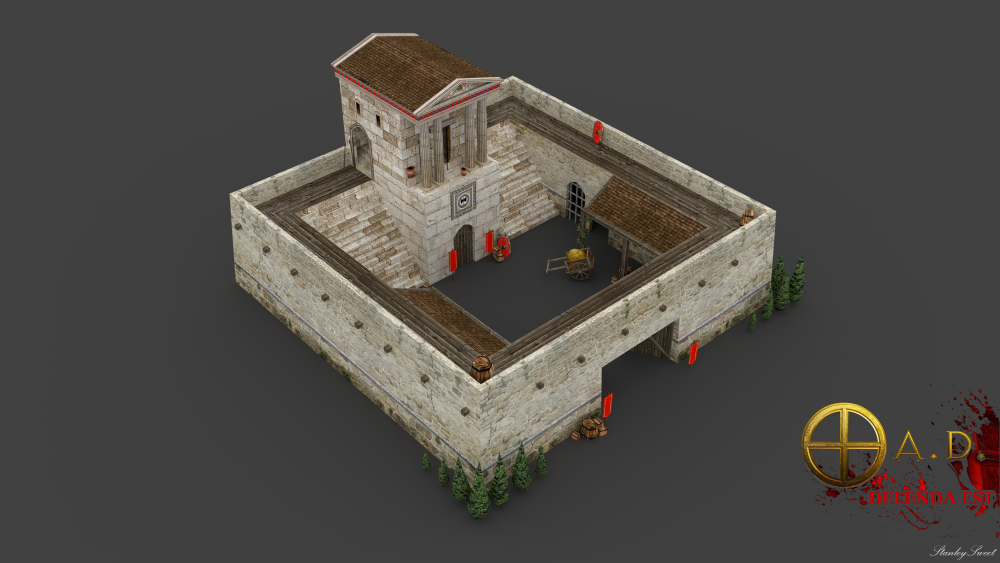
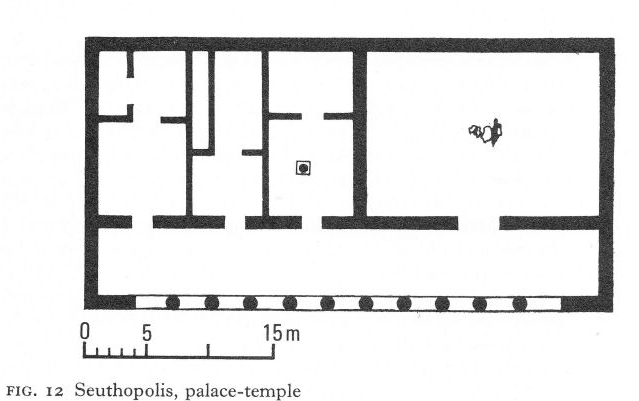
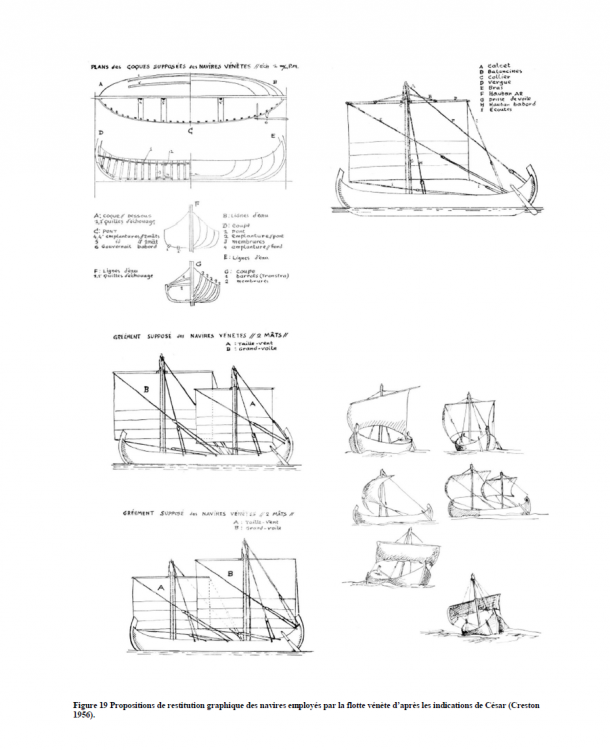
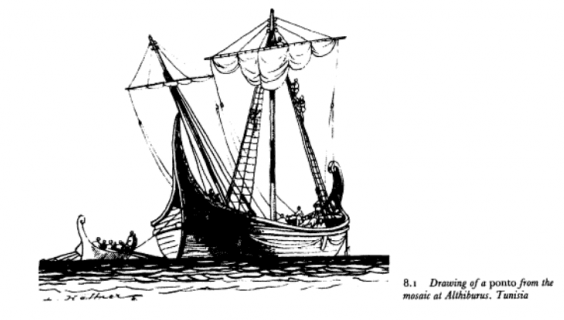
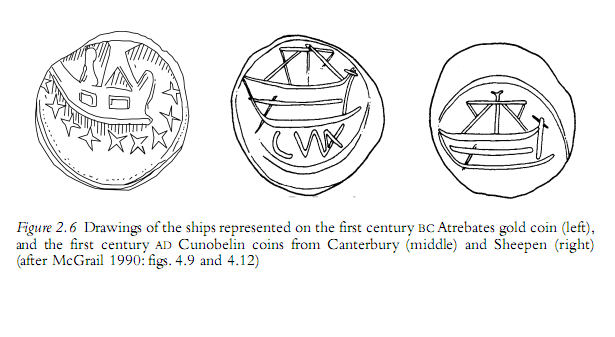

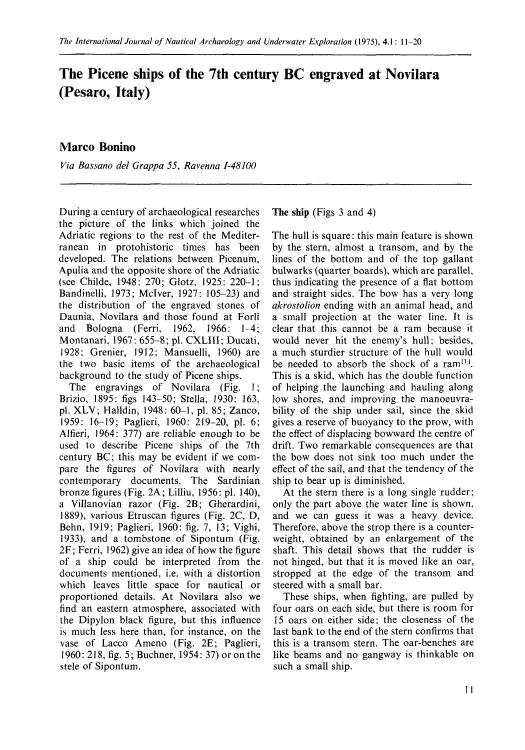
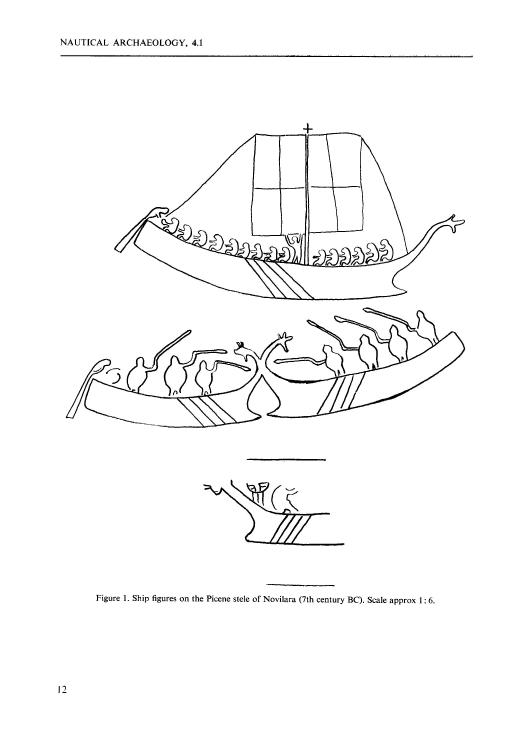
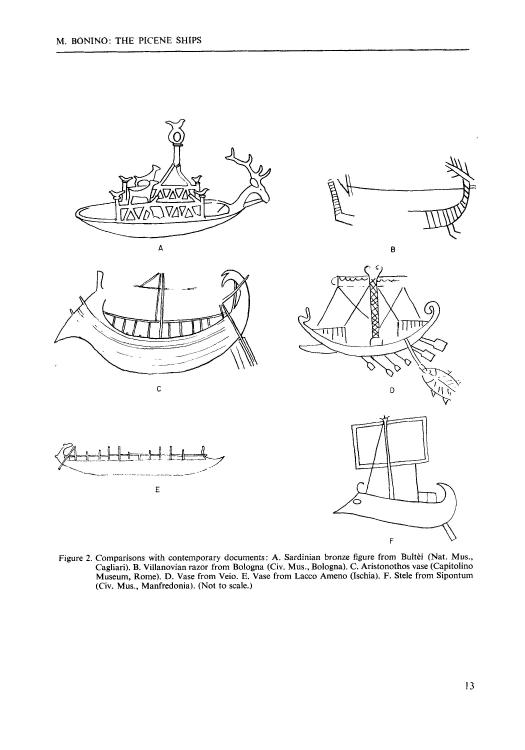
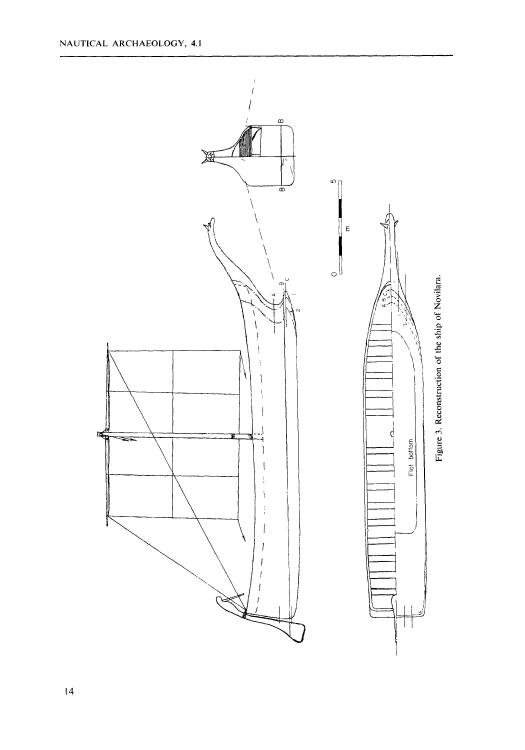
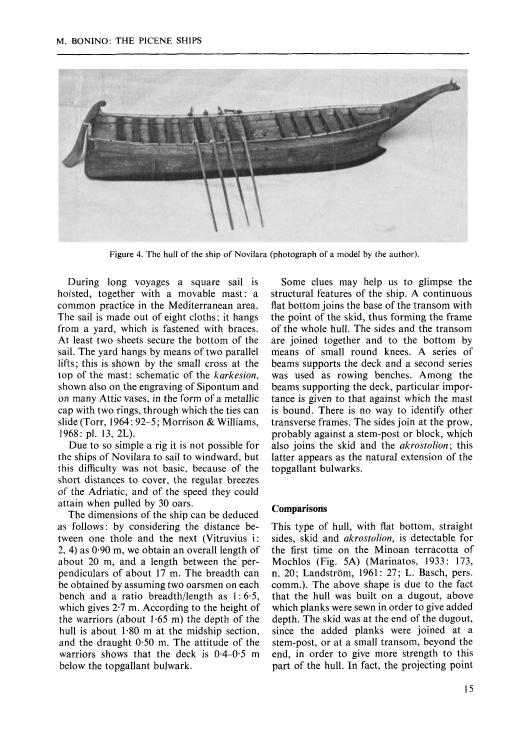
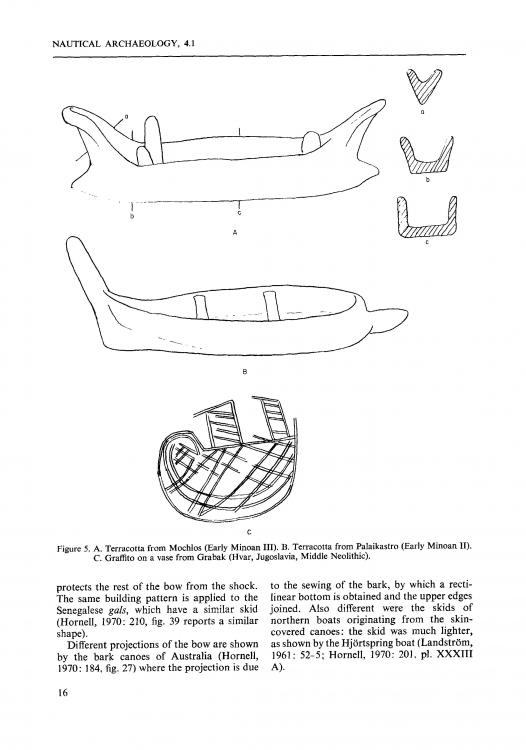
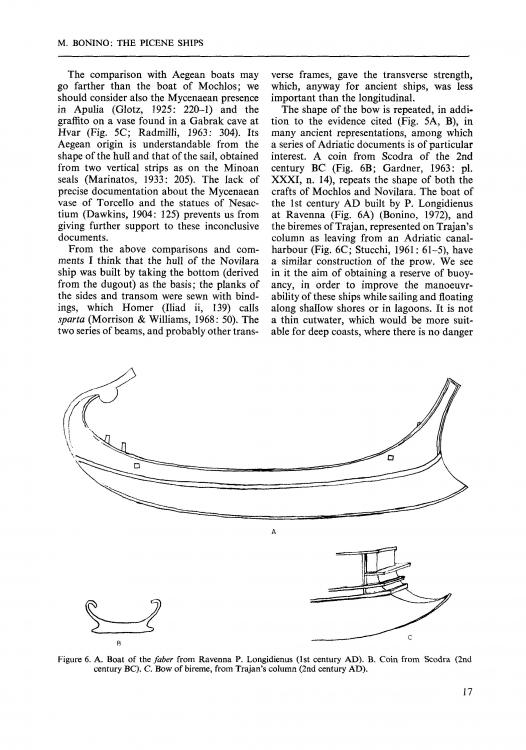
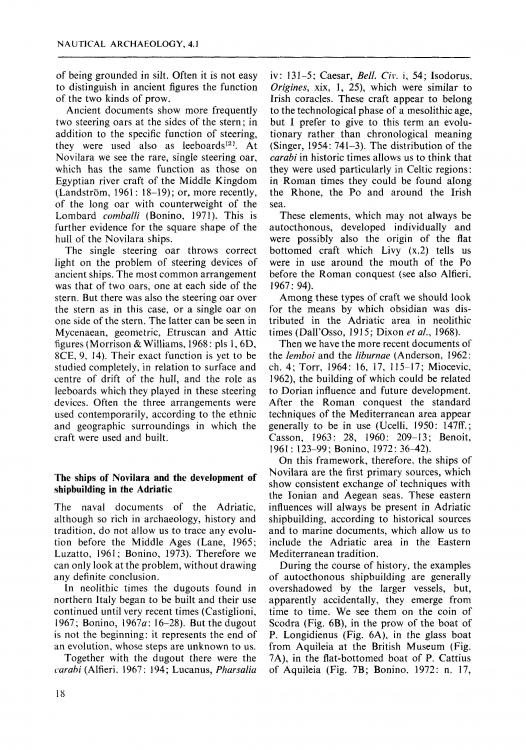
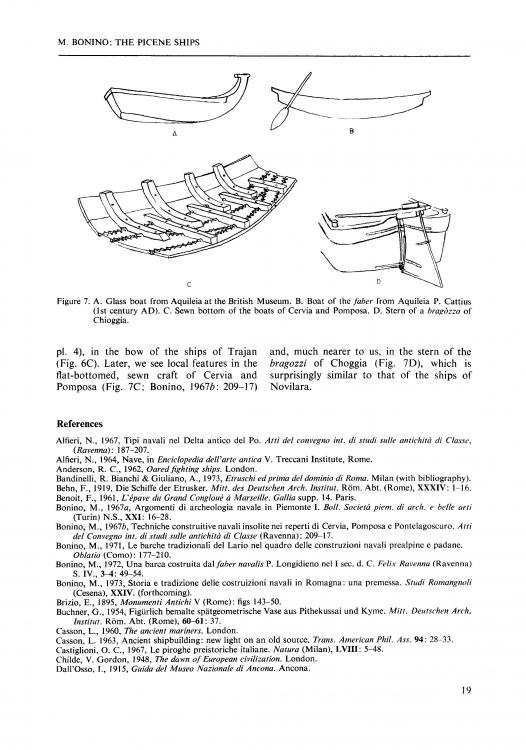
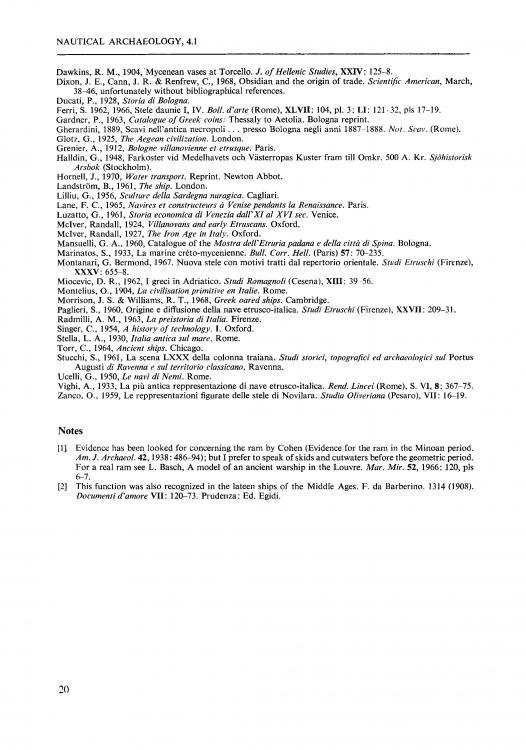


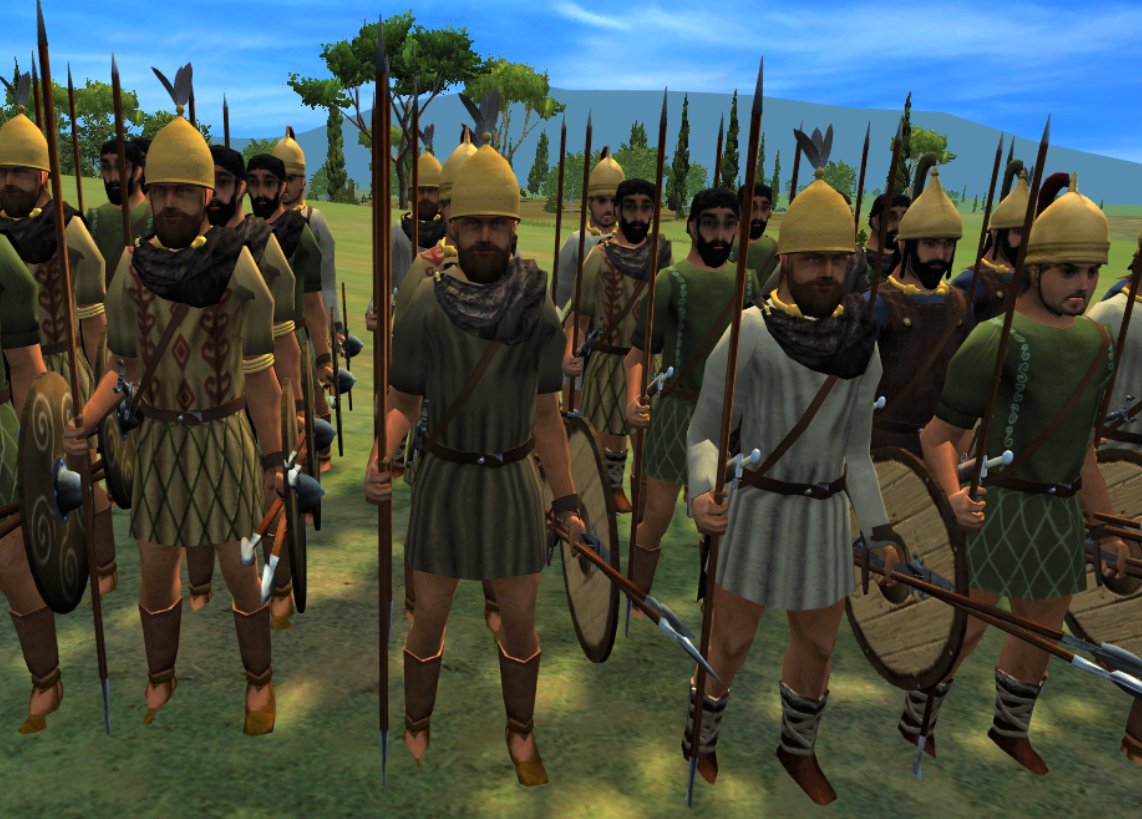
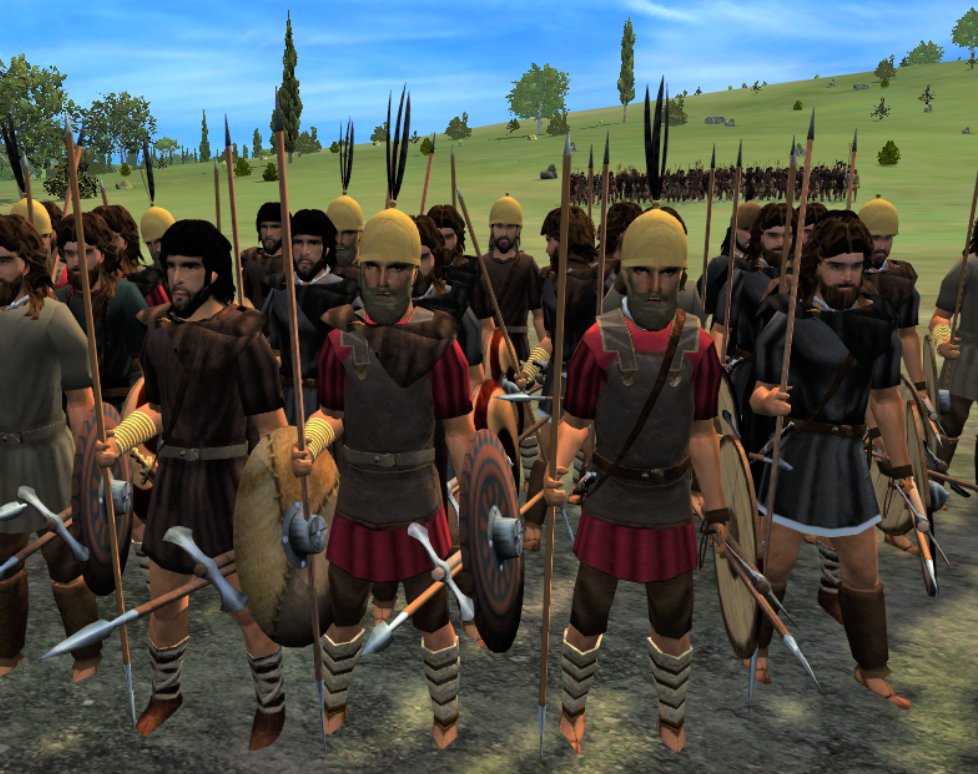
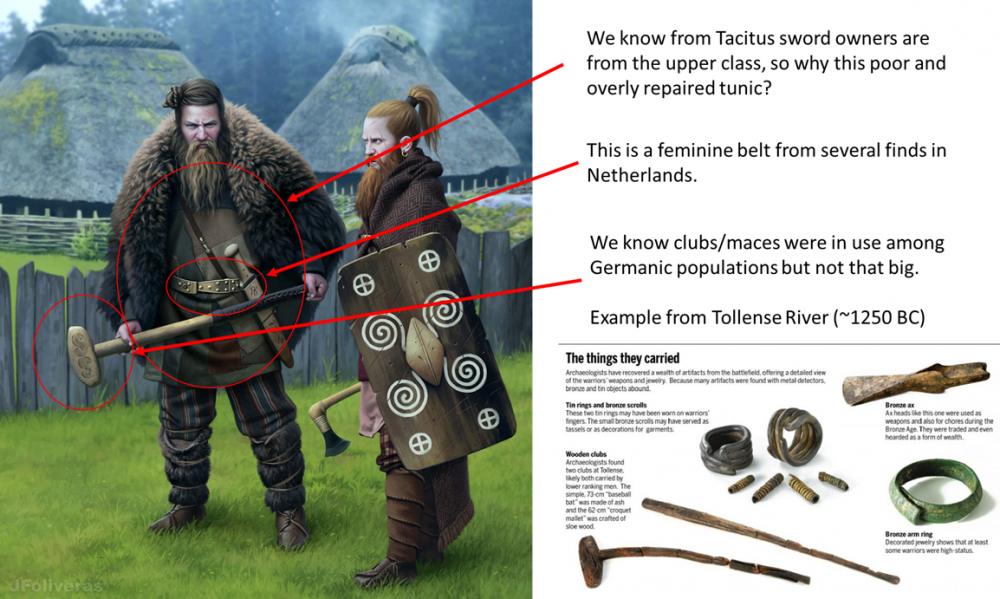
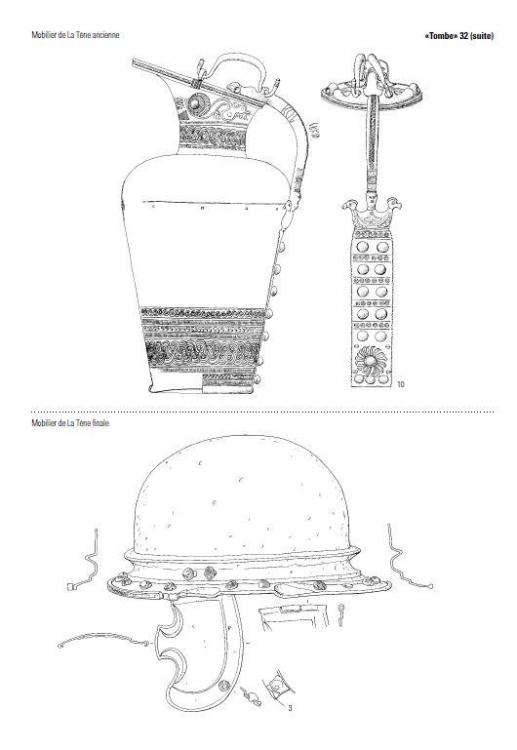
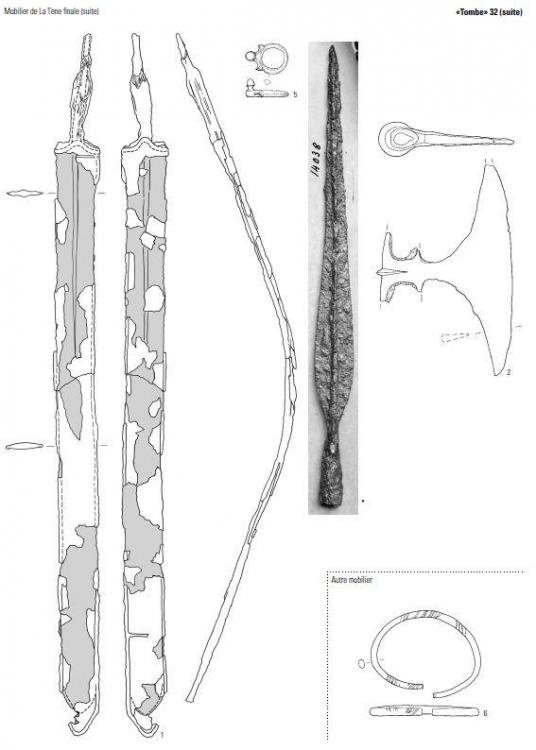
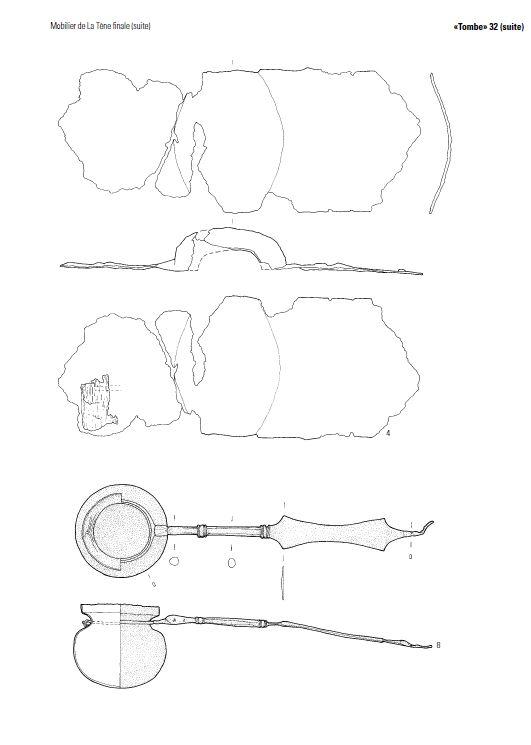
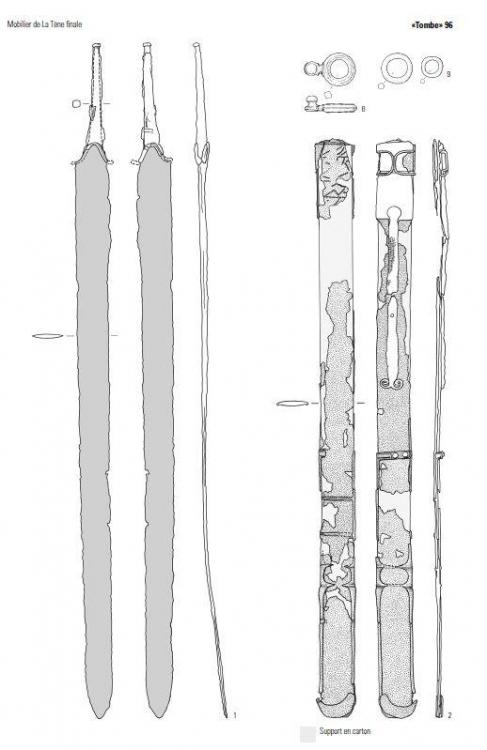
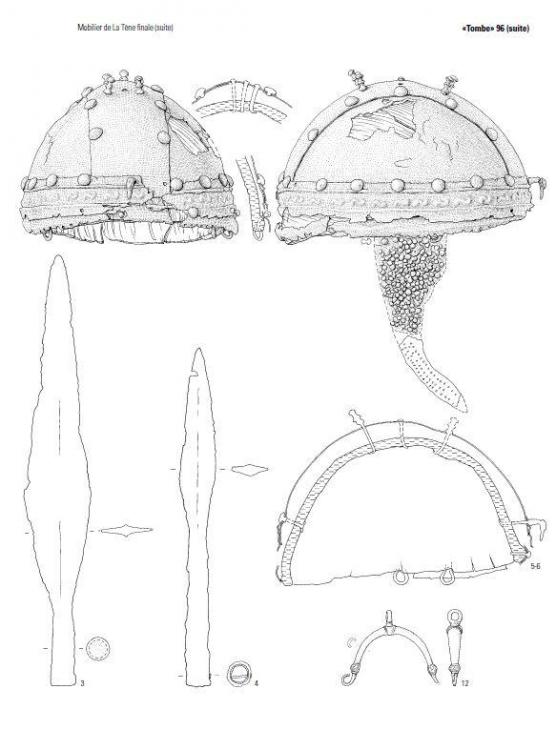
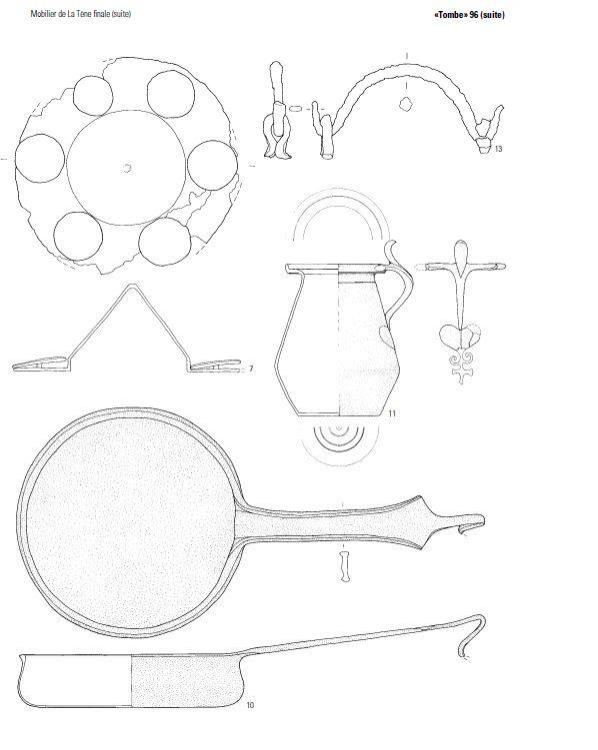
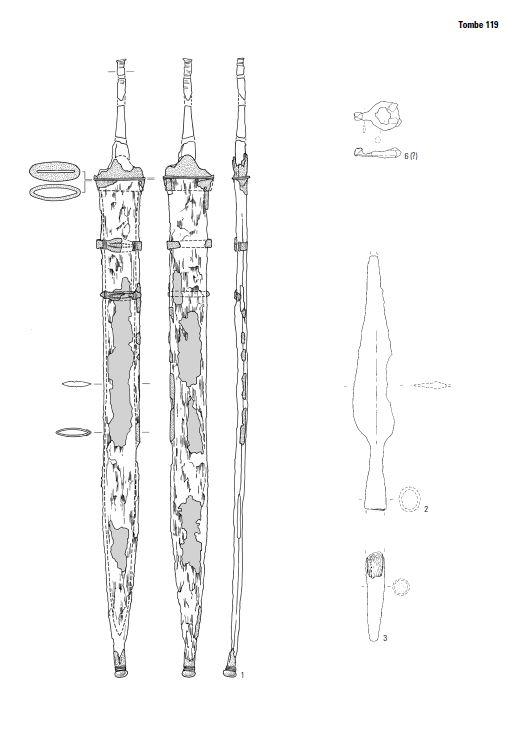
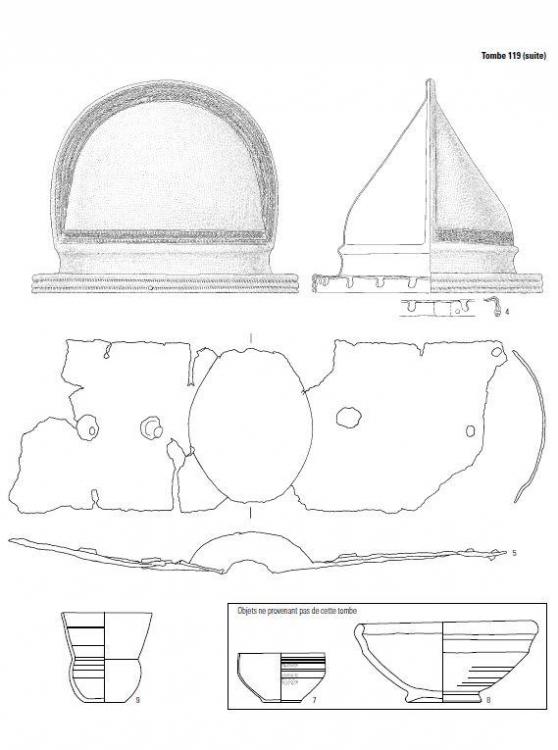
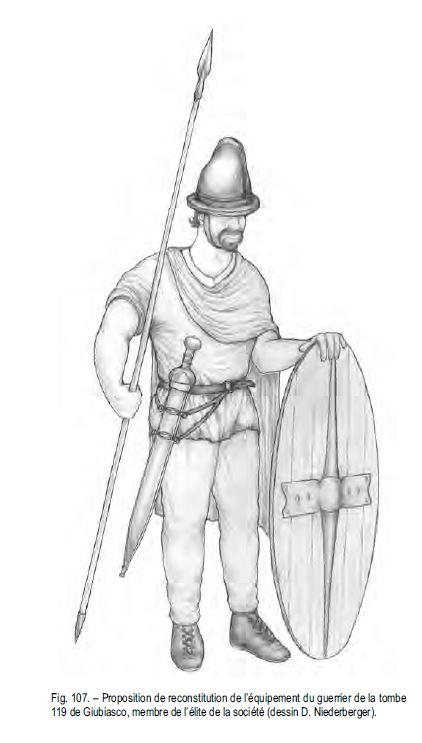
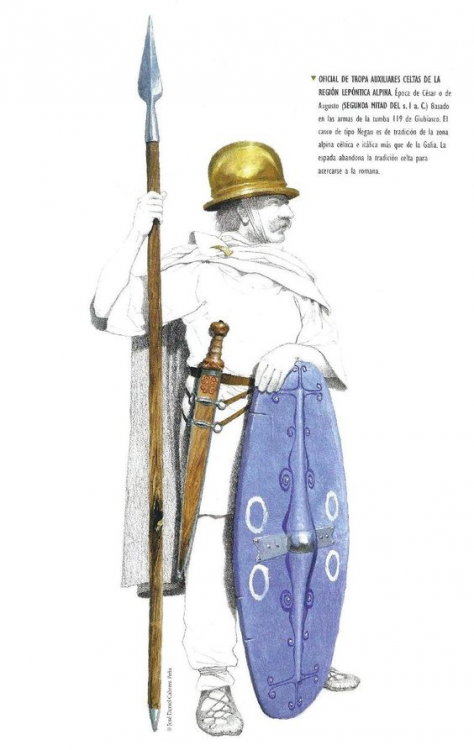
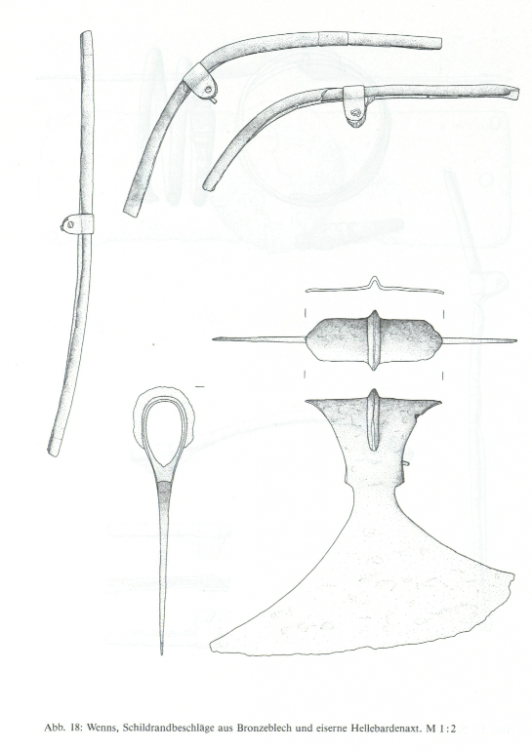
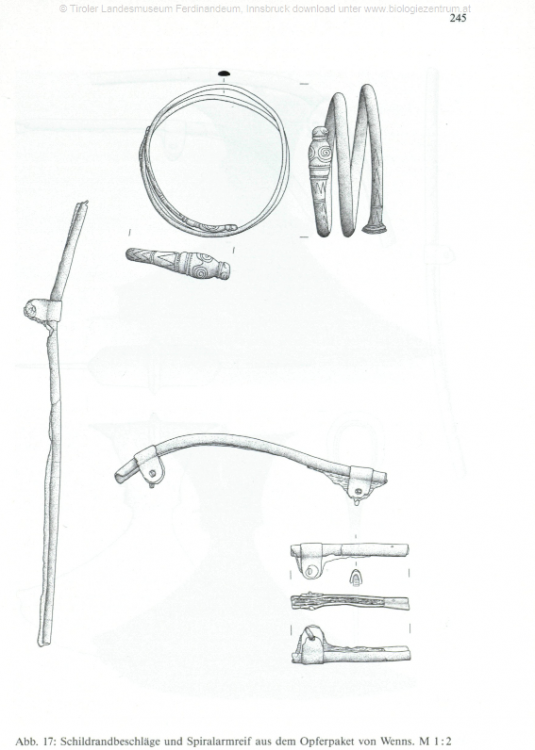
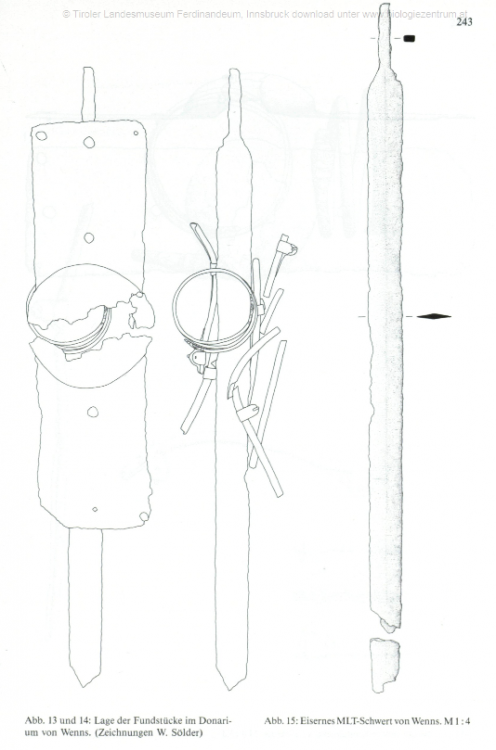
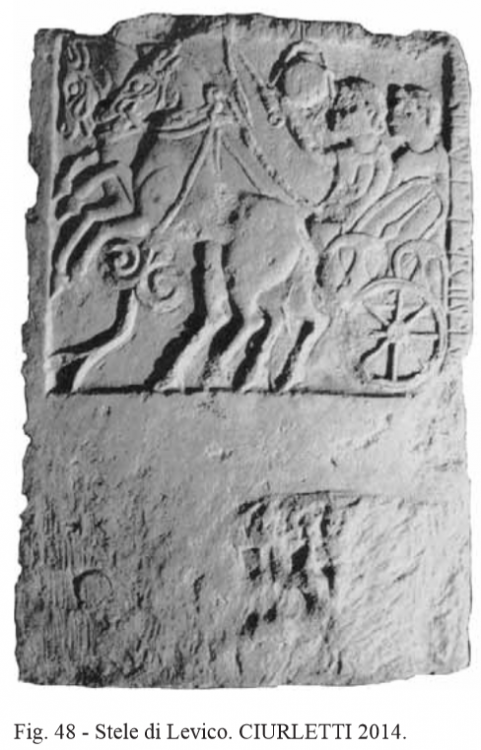
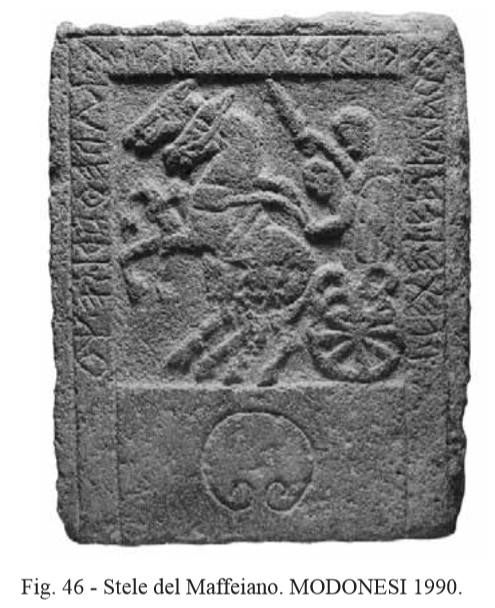
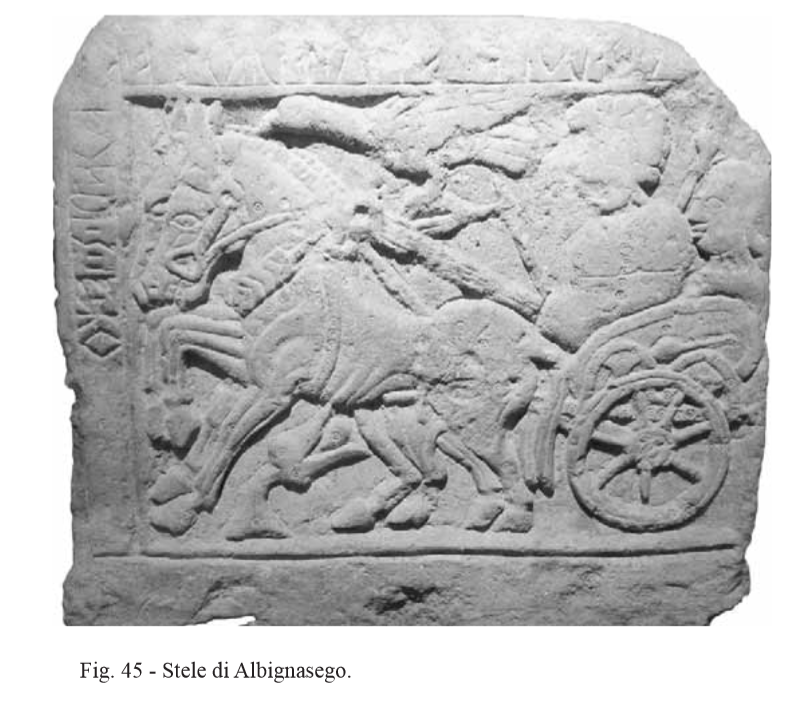
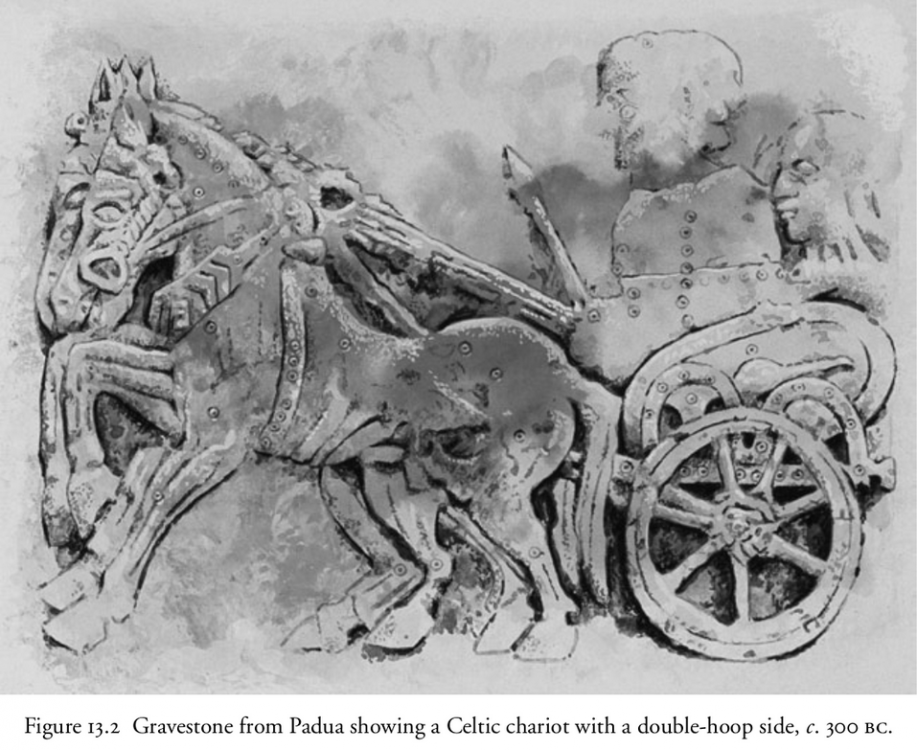

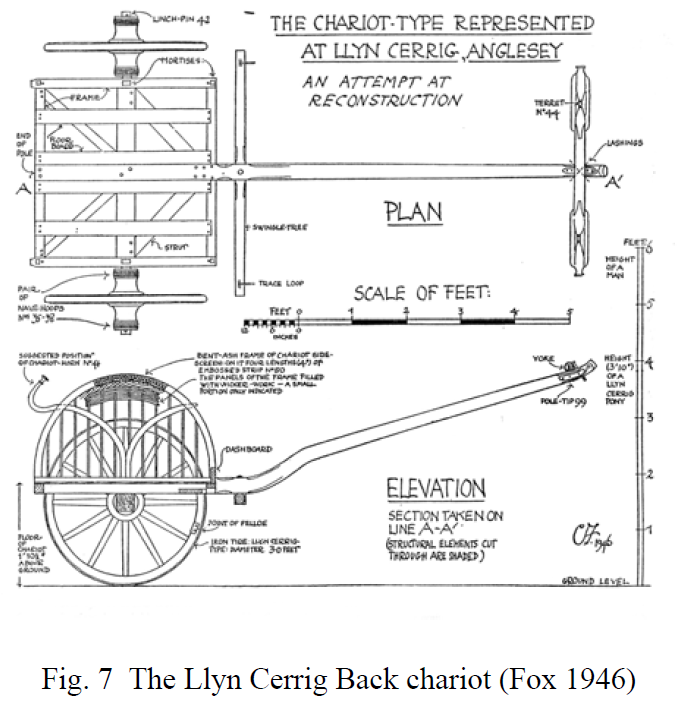
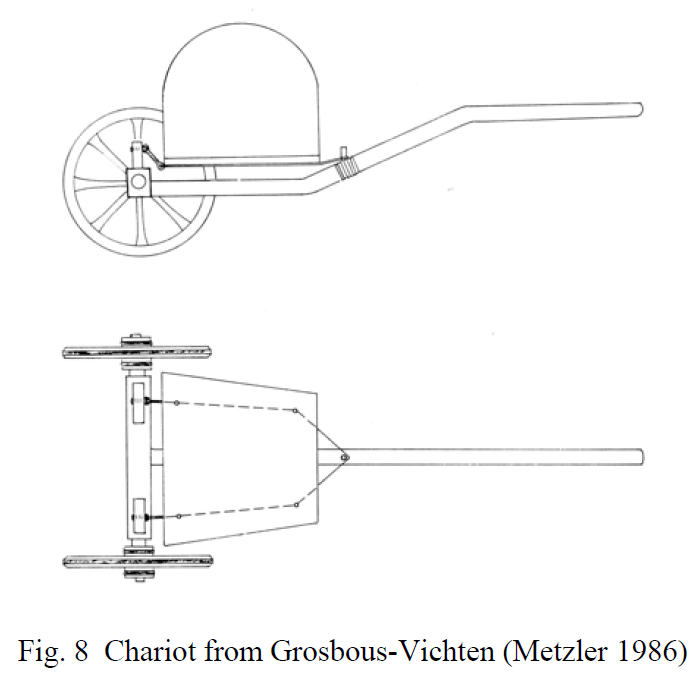
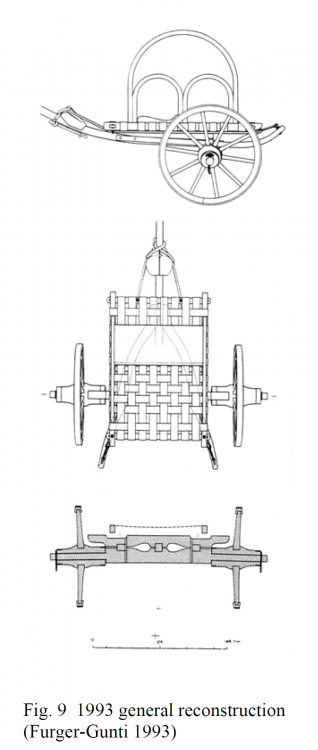
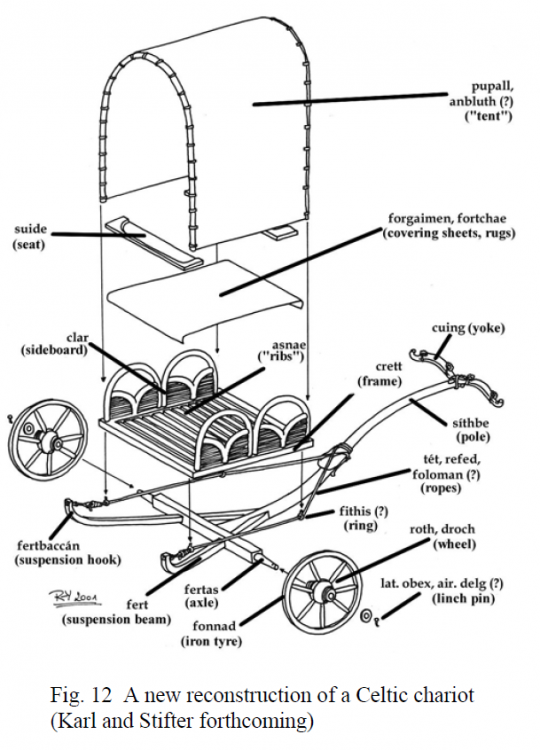
Please make it a little less ... sexist
in Help & Feedback
Posted
Well maybe the easier way is to give to all women the ability to fight as a soldier, but they are not as much strong than the men. Currently, the women do not fight automatically when attacked, am I correct? Some civilization could have bonus related to women fighting/defending themselves better.
The list is actually short on the matter of women fighting on the battlefield. And when it is the case, most of the time it is women defending themselves.